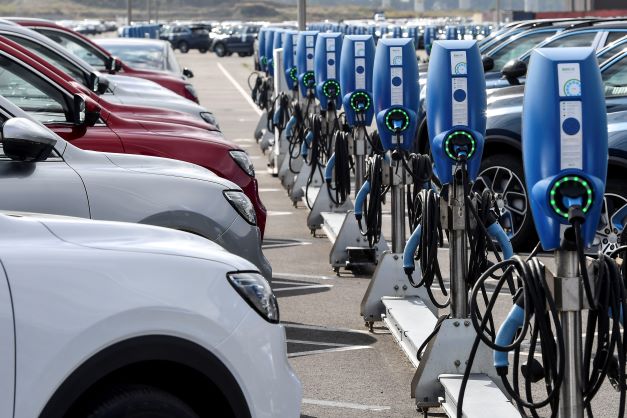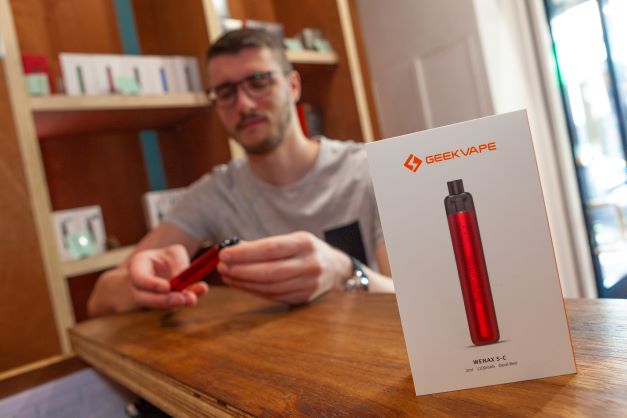- Daily & Weekly newsletters
- Buy & download The Bulletin
- Comment on our articles
Innovation fuels the transformation of vehicle, tobacco and alcohol sectors, but how does taxation drive change?
Automobile, alcohol and tobacco industries appear to have little in common but closer inspection reveals some common ground, including how each is subject to different tax regimes.
Electrification is transforming the automotive industry as climate change goals fuel the switch to the greener alternative. Passenger cars and vans are respectively responsible for around 12% and 2.5% of total EU emissions of carbon dioxide and the EU plans to have at least 30 million electric cars on our roads by 2030.
The EU has been at the forefront of the drive to aid individual countries, companies and consumers abandon their carbon fuel vehicles. Belgium is one example, with a ban on combustion engine vehicles planned for 2035.
In the face of this looming deadline, the country is seeing a rise in the acquisition of electric vehicles. Sales of more polluting cars are down overall by 48%, whereas plug-in vehicle sales have risen by almost 40%.

Since 2014, Belgium’s regional governments have launched various schemes to boost sales, from tax incentives and banning polluting vehicles in major cities to investing in EV infrastructure.
If there’s a clear interest in Belgium electric vehicles – they enjoyed pride of place at the Brussels motor show in January – the car-loving nation still need further incentives to make the leap to electric. It’s not only the higher price that’s putting off consumers. Motorists remain concerned about the more limited autonomy of electric cars and the lack of charging points.
Another factor that’s unique to Belgium is fact that the automobile market has always relied on a buoyant company car sector. Some 70% of new car registrations in 2022 were for corporations. Any uptick in electric vehicle sales is dependent on companies, driven by taxation advantages, continuing this trend.
The other challenge facing the country if it wants to reduce car ownership in general, is the ongoing need to improve public transport networks across the country.
Alternative tobacco products
Another sector undergoing transformation due to recent innovations is tobacco with alternative harm-reduction options increasingly entering the market.
The EU recognises that taxation is no longer as effective in deterring consumption. Some 26% of the overall EU adult population, and 29% of young Europeans aged 15-24, continue to smoke.
It admits that the level of tax fragmentation is ‘high’ in this sector, with some member states applying an ad hoc tax regime while others choose to include tobacco alternatives under the 'other smoking tobacco' harmonised category.
One reason for the discordance in the current legal framework is that new products have emerged since the EU’s last tobacco products directive (TPD) in 2014. It sets minimum levels of taxation, but member states are free to apply excise duty rates above these minimum levels according to their own national needs. The second, TPD2, is currently under review.

The EU recognises the need for a more comprehensive approach that takes into account all aspects of tobacco control, including public health and the fight against illicit and counterfeit trade as well as taxation.
It also acknoweldges the need to update current tobacco related framework to include new non-combustion products. Some of these had not been in existence for long when the TPD came into force.
Tobacco companies are calling for evidence-based regulation and taxation differentiation based on risk, and on the combustible or non-combustible nature of these products.
A World Health Organisation report on ‘Electronic Nicotine Delivery Systems and Electronic Non-Nicotine Delivery Systems’ includes a section on novel products. It states that if the majority of tobacco smokers who were unable or unwilling to quit switched to using an alternative nicotine source with lower health risks - and eventually stopped using it - this would represent a “significant contemporary public health achievement”.
For the moment, e-cigarettes are not subject to a harmonised tax under the directive as their commercial uptake followed its coming into force. Around half of member states have since introduced an ad hoc tax at national level.
Heated tobacco products (HTPs) are not explicitly mentioned in the TPD since the product appeared on the market following the directive. Member states have differing views on whether such products should be considered as an excisable manufactured tobacco product or not, and, if taxable, which excise category should be applied. HTPs have been introduced in an estimated 17 member states.
In Belgium, Some 1.4 million people smoke daily and more than 360,000 smoke occasionally. The cost of cigarettes in the country has increased in the last 12 months or so: a packet of cigarettes is now 25 cents more expensive than two years ago as a result of increased tax duties on tobacco. Increased excise on tobacco is expected to result in an additional income of €120 million. A levy is also due to be imposed on electronic cigarettes in Belgium.
Excess alcohol consumption
Alcohol is another sector impacting on public health that has recently come under a similar spotlight.
Measures under the Belgian government’s Alcohol Plan include limiting alcohol sales and restricting advertising. The ultimate goal is to reduce excess consumption by 20% by 2028 and reduce incidents of driving under the influence of alcohol by 50%.

EU law requires every member state to levy an excise duty on beer of at least €1.87 per 100 litres (26.4 gal) and degree of alcohol content.
Despite government efforts to limit alcohol abuse, Belgium remains among the 27 member states that, currently, levies the least amount.
It’s estimated that 15% of Belgians consume alcohol in excess and 7% have developed an addiction. An estimated 13.5% of deaths among 20 to 39-year-olds are due to alcohol.
While beer enjoys a certain protected status when it comes to taxation in Belgium, a different story with wine and spirits as the EU sets no minimum taxation level.
In 2015, the Belgian government increased the tax on wines and spirits respectively by 30% and 41%. It aimed to not only increase tax revenue, but also reduce alcohol consumption.
The result was that more Belgians shopped for their alcohol in neighbouring countries where they were cheaper, mainly Luxembourg and France. There was no discernible drop in alcohol consumption. On the contrary, according to an WHO report, it even increased.
On the face of it, there may indeed seem little to link tobacco, alcohol and transport. But taxation is one area where there are mutual interests and/or policy goals at stake.
Photos: Brussels Motor Show; EV charging points ©Belga; Goodboro e-cigarette, e-liquids & accessories store, Namur ©Damien Maguire/Image Digital; Bob campaign ©Belga
















